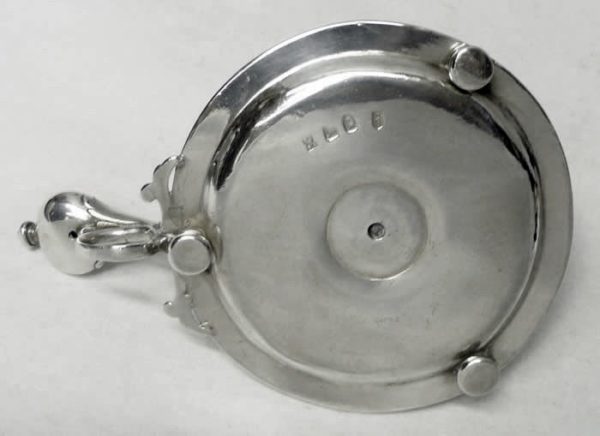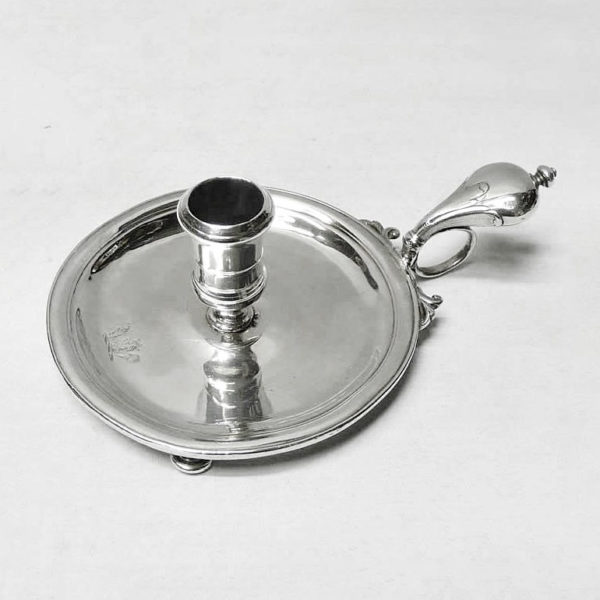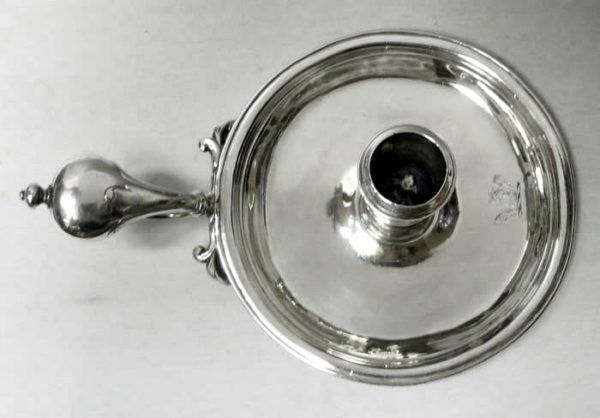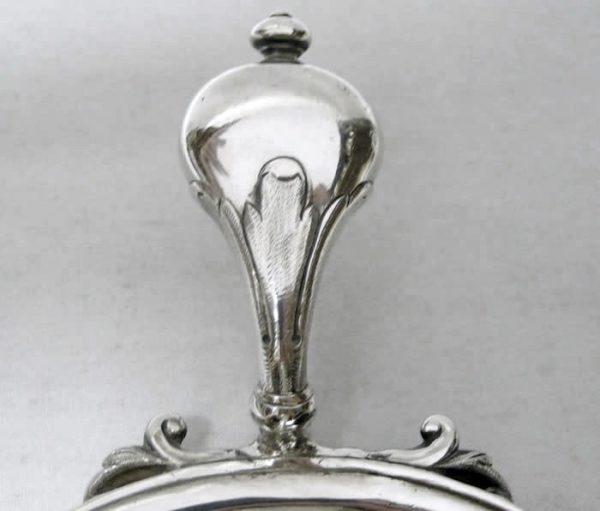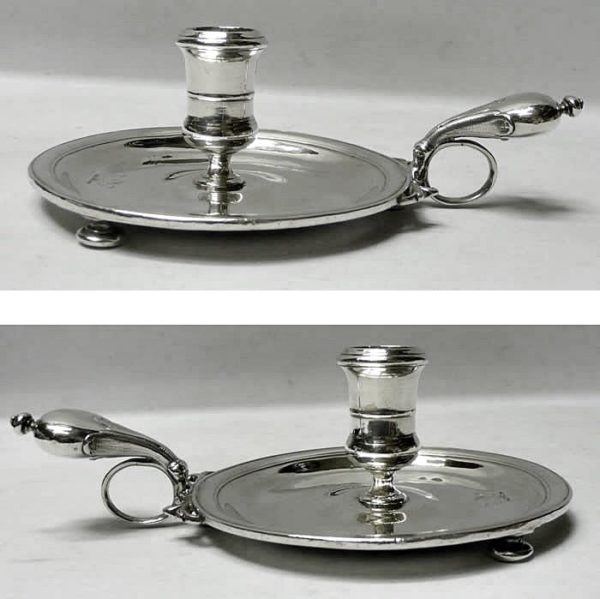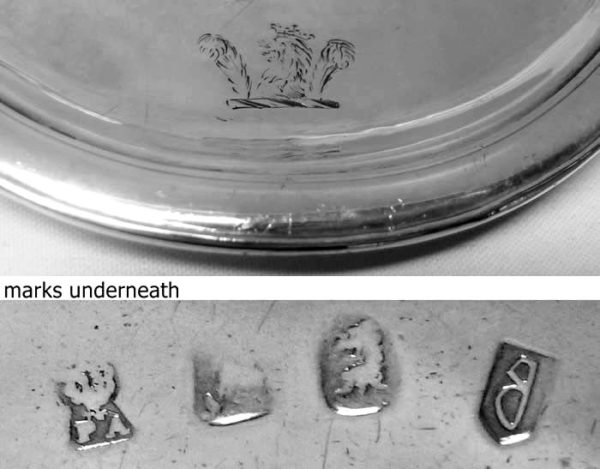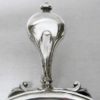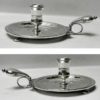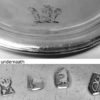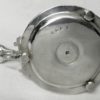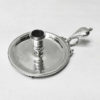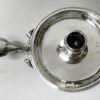Queen Anne Silver Chamberstick
SOLD
Stock: 7725
Date: 1704
Maker: Simon Pantin
Country: England
A rare early English silver chamber stick (also known as a go to bed) with the solid design and excellent...
Description
Condition
This superb silver chamberstick is in excellent condition. Very heavy quality and superb colour. Crisp engraving. With a full set of English silver marks, all very clear apart from the Britannia mark which is badly struck. Please note that this item is not new and will show moderate signs of wear commensurate with age. Reflections in the photograph may detract from the true representation of this item.
Maker Information
Maker: Simon Pantin
Simon Pantin (1666-1733) came from a long line of Rouen goldsmiths dating back to the late 16th century when Jacob Pantin, Simon’s great-great grandfather first entered the distinctive peacock maker’s mark which continued to be used by successive generations of the Pantin family. Simon came to England in the early 1680’s as a refugee when his family fled the Huguenot persecution in France. The Pantins settled within the Rouen protestant community in London where they already had existing family members. Simon’s father had been a practising goldsmith in France and his son Simon was apprenticed to the prestigious Pierre Harache, also from Rouen, in 1686. Freed from his apprenticeship in 1693, aged 27, Simon finally obtained his freedom of the Goldsmith’s Company in 1701 and entered his first mark (Britannia Standard) 3 weeks later giving an address in St Martins Lane. Simon subsequently moved nearby to Castle St at “the sign of the peacock” in 1706 where he remained until his death in 1733. 2nd mark 1717, 3rd mark (Sterling) 1720. All marks incorporated the Pantin trademark “peacock”. Livery, October 1712. Simon married (date unknown) Marthe de Joncourt, a Huguenot refugee from Saint-Quentin in France and they had at least 7 children of whom 3 died young and 3 became goldsmiths – Elizabeth (Eliza Godfrey), Simon II and Lewis Pantin. Simon took 9 apprentices, all Huguenot, including Augustin Courtauld, Peter Courtauld, Abraham Buteux (his nephew and godson) and Simon Pantin II (his son). Simon Pantin’s extensive work includes many fine specimens on display in museums and institutions worldwide including the beautiful tureen in the Hermitage Museum, St Petersburg and the 1724 “Bowes” tea set in the Metropolitan Museum, New York. His expert technique, elegant style and minimal use of decoration was ideally suited to his main output of domestic teawares (tea canisters, teapots and kettles) and expertly cast candlesticks. biography extracted from Sandra Robinson's "Simon Pantin & His Children"
Our Guarantee
Customer satisfaction is our primary concern
All silverware on our website is checked thoroughly prior to offering it for sale and every product listing contains a condition report and details of the silver hallmarks.
All items offered on our website include:
- Free Shipping Worldwide
- Tracked and Insured
- 14 day no quibble money back guarantee
- We are accredited members of LAPADA and conform to their strict professional standards
- We dispatch 1-3 days after receiving cleared payments
More detailed information about deliveries, returns and how to pay is available in the Help section at the bottom of this page.
